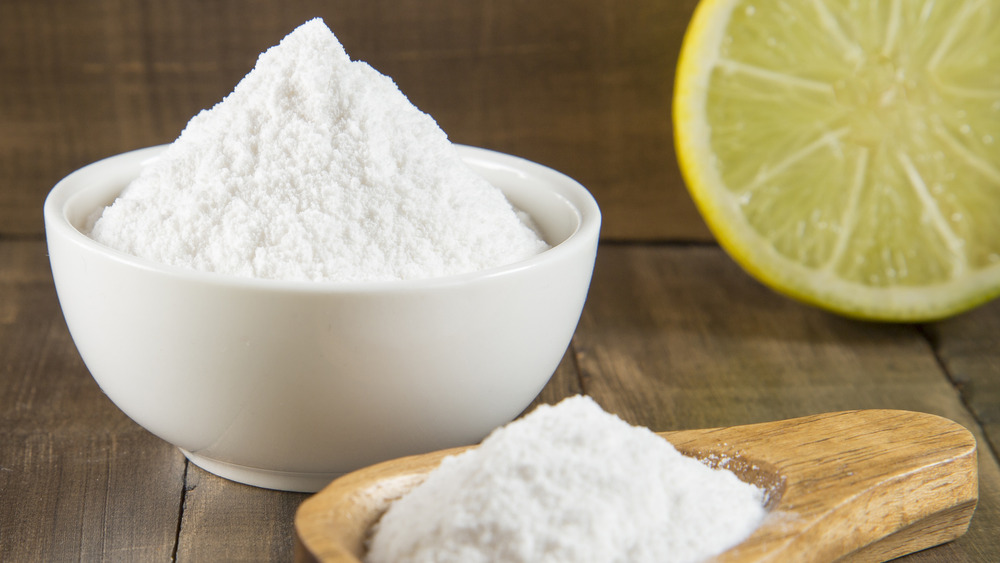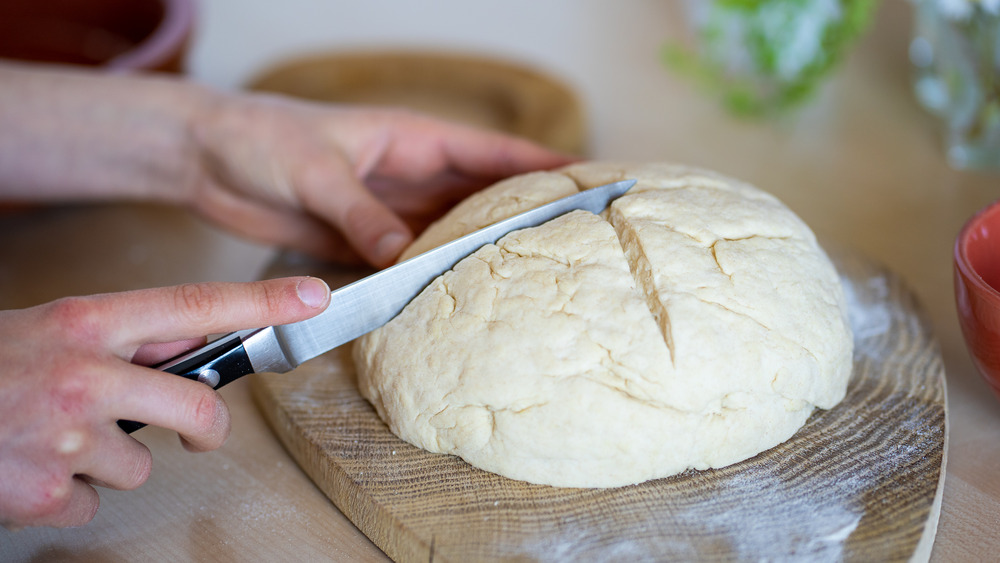This Is How To Swap Baking Soda And Baking Powder
Baking requires precision (via Wired) because it relies, in part, on chemical reactions (via Education). Accordingly, although baking allows for some leeway when it comes to swapping out one ingredient for another, the swapping out itself also requires precision. A perfect example would be when you're faced with the possibility of having to substitute baking soda for baking powder, or vice versa. Although the names are close, and although they look almost indistinguishable, these two leavening agents are distinct and serve different purposes. And it all boils down to chemistry, and, more specifically, their relative acidity.
Baking soda, which is 100 percent sodium bicarbonate, is a "weak base," according to Georgia State University's Hyperphysics, which means that it's not particularly acidic. However, when mixed with an acidic liquid such as buttermilk, lemon, or vinegar, baking soda reacts by releasing carbon dioxide gas bubbles (like soda does). In the baking context, those bubbles add lightness to your baked goods, causing them to rise.
By contrast, baking powder is a mixture of baking soda and cream of tartar (at a 1:2 ratio) which is a "weak acid." Since the baking soda and cream of tartar are in dry form, no chemical reaction occurs. However, when you add a neutral liquid like water, the two substances combine to form those carbon dioxide gas bubbles that bring lightness and a "rise" to your baked goods. With that in mind, here's how to swap baking soda and baking powder when baking.
When you're out of baking powder, here's how to swap in baking soda
Swapping baking soda and baking powder when baking is pretty simple once you understand the way each works as a leavening agent. According to Georgia State University's Hyperphysics, baking soda can serve as a leavening agent when mixed with an acidic liquid such as buttermilk, lemon juice, or vinegar. By contrast, baking powder already contains an acidic ingredient (cream of tartar), so it can serve as a leavening agent in baking without the addition of any other acidic ingredients. All that's necessary is water to create the bubbling reaction that gives rise to the dough. That might help explain why Irish soda bread, one of the ingredients of which is buttermilk, requires only baking soda in order to rise, while these sugar cookies require baking powder to rise (the baking powder is the only acid ingredient in the recipe).
Accordingly, if you're baking, say, sugar cookies, and you realize you're out of baking powder, but you do have baking soda and cream of tartar, simply combine one-quarter teaspoon baking soda with one-half teaspoon cream of tartar. This makes the equivalent of one teaspoon of baking powder without altering the taste, according to What's Cooking America. And if the recipe also calls for baking soda, add it in addition to your homemade baking powder.
Read this before swapping baking powder for baking soda
If you've got baking powder on hand, but what you need is baking soda, you'll want to read this before you decide to try to execute a swap. Every teaspoon of baking powder contains about a third of a teaspoon of baking soda. So, if your recipe calls for one teaspoon of baking soda, and you only have baking powder, you could substitute three teaspoons of baking powder for every teaspoon of baking soda your recipe calls for. The catch, however, is that the cream of tartar in the baking powder isn't tasteless. In fact, some describe its flavor as metallic or soapy (via Sally's Baking Addiction). And there's no known "antidote" for that flavor.
In fact, the only solution to having too much cream of tartar in a recipe, according to Spiceography, is to add more of every other ingredient. However, if you were to try to do that, you would have to add more baking powder in order to have sufficient "baking soda" content in your baked goods. Therefore, swapping baking powder for baking soda isn't necessarily going to net you the best finished product. On the other hand, if your baking powder contains cornstarch, as many commercial baking powders do, you can add it to soups, stocks, and sauces to add thickness and body (via Modern Mom).


